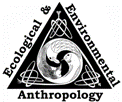Wildlife Damage Management, Internet Center for

Ecological and Environmental Anthropology (University of Georgia)
Date of this Version
2007
Citation
Ecological and Environmental Anthropology (2007) 3(1)
Also available at http://eea.anthro.uga.edu/index.php/eea/index
Abstract
In recent years, there seems to have been a wave of new books focused on mundane items of daily life. A list of the subjects of these books reads like a catalogue of commodities: coal, salt, cod, tobacco, coffee, cotton, not to mention various works dealing with commodities of the shadow economy such as cocaine, cannabis and heroin. These books seem to comprise a growing genre of popular non-fiction that might be called commodity biographies wherein the major narrative focus is on explicating the histories and everyday uses and abuses of perennially popular and ubiquitous items. Nina G. Jablonski’s Skin: A Natural History (2006) is unique among the aforementioned volumes because its central biographic “character” is not a commodity at all, but is certainly more ubiquitous and has been used and abused on a much more intimate basis than any commodity in history.


Comments
Copyright © 2007, Patrick Huff. Used by permission